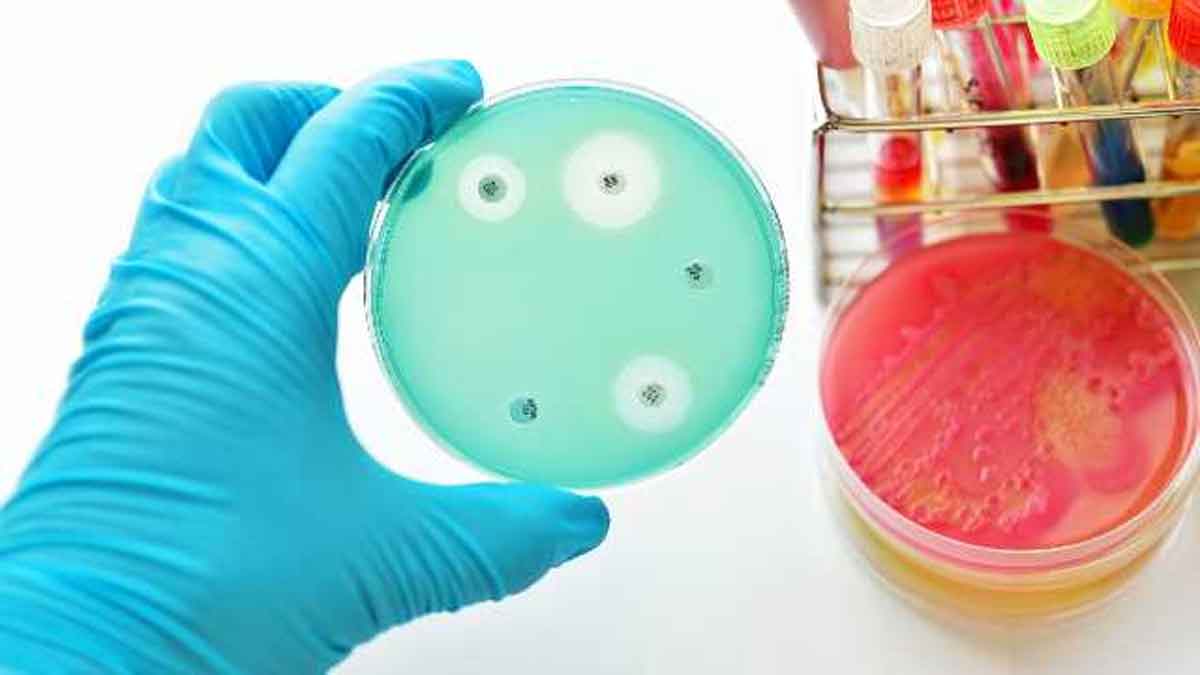- Home
- Editorial
- News
- Practice Guidelines
- Anesthesiology Guidelines
- Cancer Guidelines
- Cardiac Sciences Guidelines
- Critical Care Guidelines
- Dentistry Guidelines
- Dermatology Guidelines
- Diabetes and Endo Guidelines
- Diagnostics Guidelines
- ENT Guidelines
- Featured Practice Guidelines
- Gastroenterology Guidelines
- Geriatrics Guidelines
- Medicine Guidelines
- Nephrology Guidelines
- Neurosciences Guidelines
- Obs and Gynae Guidelines
- Ophthalmology Guidelines
- Orthopaedics Guidelines
- Paediatrics Guidelines
- Psychiatry Guidelines
- Pulmonology Guidelines
- Radiology Guidelines
- Surgery Guidelines
- Urology Guidelines
Study decodes how bacteria develop antibiotic resistance

Antibiotic resistance is a potentially catastrophic menace the world is facing in recent years. Researchers have been hunting for the mechanism which enables a bacteria to develop resistance for antibiotics. The mechanism is now unveiled by a team of researchers from Newcastle University. The team pointed out that bacteria can actually lose its cell wall which is the most common target of antibiotics. The study was published in Nature Communications.
Bacterial cell wall plays a key role in protecting it from physical, chemical and environmental stress. Antibiotics such as vancomycin and penicillin interfere with the synthesis of the cell wall and restrict bacterial growth. However, sometimes the bacteria may escape this either by genetic mutation or by changing its cell wall configuration, the mechanism is still not clear. The World Health Organisation (WHO) has identified antibiotic resistance as one of the biggest threats to global health, food security, and development today.
Read also: Antibiotics for Pneumonia,Short course reduces risk of adverse events and antibiotic resistance
The research by the Errington lab which turns on its head current thinking about the bacteria's ability to survive without a cell wall, known as "L-form switching". This form of bacteria is neither detected by the antibiotics nor detected by our body's immune system. It also may escape tradition hospital diagnoses.
The research shows that when antibiotics are present - such as in a patient with a Urinary Tract Infection (UTI) receiving penicillin or other cell wall-targeting antibiotic - then the bacteria has the ability to cL-form switchinghange its form, losing the cell wall which is often the target of the antibiotic.
In a previous publication, which appeared in Cell in 2018, the Errington team demonstrated that our immune system can also to some extent induce L-form switching but treatment with antibiotics has a much more profound effect. The current study showed that L-forms of various bacterial species typically associated with UTIs including E. coli, Enterococcus, Enterobacter and Staphylococcus were detectable in 29 out of 30 patients involved in the study.
Read also: New antibacterial fillings may combat problem of recurring tooth decay, antibiotic resistance
In this L-form the bacteria are flimsy and weaker but some survive, hiding inside the body.
The research also captured on video for the first time, L-form bacteria isolated from a patient with UTI re-forming a cell wall after the antibiotic had gone - taking just 5 hours. The team was also able to show by direct microscopy in the transparent zebrafish model, that the L-form switching is possible in the context of a whole living organism and not only in artificial conditions in the lab.
Explaining how a bacteria changes its form, the lead author, Dr Katarzyna Mickiewicz researcher at Newcastle University said: "Imagine that the wall is like the bacteria wearing a high-vis jacket. This gives them a regular shape (for example a rod or a sphere), making them strong and protecting them but also makes them highly visible - particularly to human immune system and antibiotics like penicillin.
"What we have seen is that in the presence of antibiotics, the bacteria are able to change from a highly regular walled form to a completely random, cell wall-deficient L-form state- in effect, shedding the yellow jacket and hiding it inside themselves.
"In this form, the body can't easily recognize the bacteria so doesn't attack them - and neither do antibiotics."
Dr Mickiewicz explained: "In a healthy patient this would probably mean that the L-form bacteria left would be destroyed by their hosts' immune system. But in a weakened or elderly patient, like in our samples, the L-form bacteria can survive. They can then re-form their cell wall and the patient is yet again faced with another infection. And this may well be one of the main reasons why we see people with recurring UTIs.
"For doctors this may mean considering a combination treatment - so an antibiotic that attacks the cell wall then a different type for any hidden L-form bacteria, so one that targets the RNA or DNA inside or even the surrounding membrane."
The research also found that L-form bacteria is difficult to identify by traditional methods used in hospital as the gel used in effect "pops" the bacteria as they are put into it.
Read also: Antibiotic resistance cause of 33,000 deaths annually, finds ECDC
A special osmoprotective detection method was needed to support the weaker L-form bacteria, enabling them to be identified in the lab.
The team will be furthering the research with trials in patients who have had treatment.

Disclaimer: This site is primarily intended for healthcare professionals. Any content/information on this website does not replace the advice of medical and/or health professionals and should not be construed as medical/diagnostic advice/endorsement or prescription. Use of this site is subject to our terms of use, privacy policy, advertisement policy. © 2020 Minerva Medical Treatment Pvt Ltd